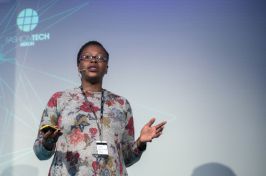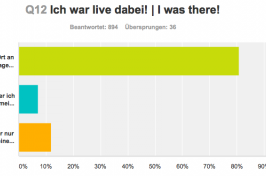Aric Toler and Bellingcat are utilizing the art of digital forensic journalism to turn publicly available information into insightful and revealing investigative news articles.
The classical perception of investigative journalism is that of a reporter tirelessly searching for the right source willing to talk or sifting through thousands of pages of official documents to find some critical piece of information (or perhaps to have that information conveniently leaked to the reporter à la the Panama Papers). But some of the most insightful and revealing investigative reporting is not the hunting down of hidden information, but rather the careful analysis of information that is freely available on the internet. This is a major part of digital forensic journalism, a field Aric Toler has been active in through his work with the independent investigative journalism website Bellingcat.
Aric has a background in Slavic languages, a skill he has put to use by focusing on researching and reporting on news stories related to Russia and Ukraine, particularly the involvement of the Russian military in Ukraine and the crash of Malaysia Airlines Flight 17, which was shot down along the Russian-Ukraine border in 2014.
Using his knowledge of the Russian language, much of Aric's work involves trawling through the web, tracing the spread of information among Russian-speaking internet users with the intent of discovering things like where certain online posts originated or where official accounts of events in these countries differ from what locals on the ground are reporting. None of this information is necessarily hidden – it just requires a person dedicated enough to collect and analyse everything. Aric is that person, and the results of his tech-driven work have called into question official statements from the Russian government.
For example, in 2014, Aric worked with attentive readers to analyse the surroundings of a Russian soldier in a picture posted on Russian social media. Thanks to geotagging, satellite imagery and the power of crowdsourcing, Aric was able to pinpoint the picture as having been taken in a village close to the Ukraine-Russian border, as well as to identify other pictures as being from within Ukraine. All of this casted doubts on the Russian government's claims that it had no military presence in Ukraine at this time. Another investigation methodically deconstructed satellite images published by the Russian government claiming to show a Ukrainian base with anti-aircraft weapons near the site of the MH17 crash; Aric's analysis using Google satellite imagery and other digital resources showed why the images from the Russian government are unlikely to be from the time period claimed.
This is the beauty of digital forensic journalism – the claims made by Aric and other journalists at Bellingcat are typically based on information that is freely available on the web. This means readers are empowered to read and evaluate the available information themselves and make their own conclusions, rather than simply having to trust that everything is being reported to them fairly and accurately.
At re:publica, Aric will speak more in-depth on the reporting he is doing with Bellingcat, as well as announce some new projects in the works. We are excited to hear more about how Aric and his fellow reporters are expanding the frontiers of investigative journalism, bolstered by the limitless possibilities of technology and the internet.
Photo Credit: Aric Toler





